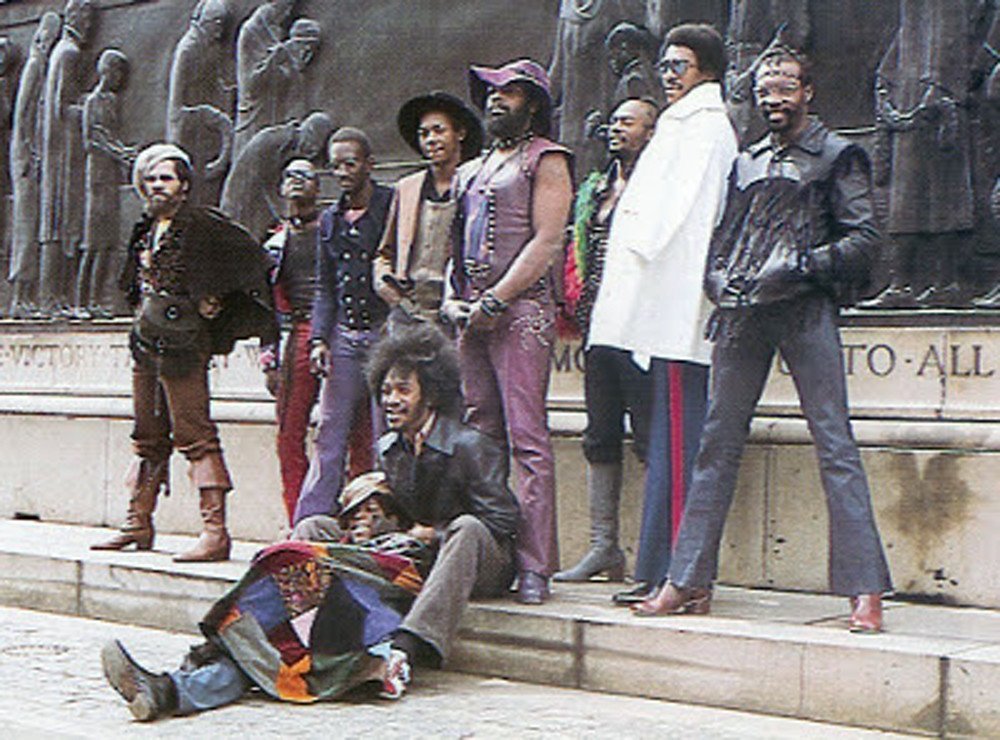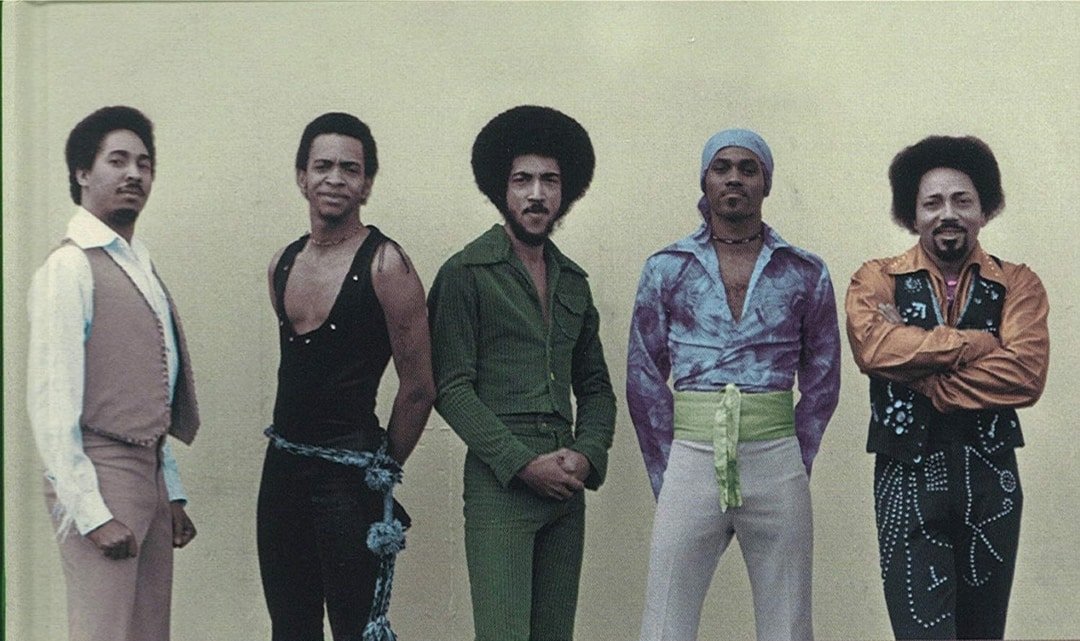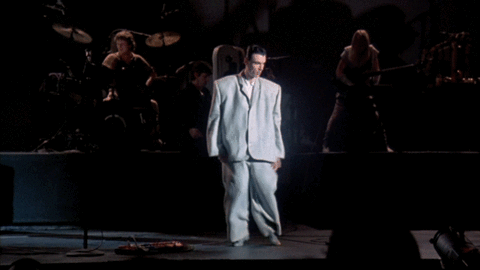Five Killer Rock Instrumentals About Death That Fortify Life
Once being born there is only one outcome no human being can avoid.
At times music can make us feel reborn while staring directly into the void.
Occasionally doing so powerfully enough so that lyrics could only provide dilution.
These five well-aged yet timeless instrumentals embody that sentiment.
This edition of The Five Spot features a few hot rocks for you to dig before the diggin’.
In Memory Of Elizabeth Reed-The Allman Brothers Band
“In Memory Of Elizabeth Reed” is a brilliant jazz-infused number composed by guitarist Dickey Betts, captured At The Fillmore East by The Allmans’ original lineup at their song-stretching best. Any live edition you can find of this song likely rips. The studio version provides merely a blueprint. My personal favorite was in the early aughts, alongside my DAWG Danny Granite, both recent East Coast transplants, taking it in at a gorgeous cut-out-of-a-mountain-overlooking-the-sea venue known as Santa Barbara Bowl, with the song starting as the sun began to sink and then continuing until it seemed to drop into the Pacific Ocean.
I can’t provide y’all footage of that one. You kinda had to be there but you can just take my word for it. When this heater crescendo-d after double-digit minutes, things went from light to dark with an Allman Brotherly spark.
Speaking of a spark, my beloved brother-in-law provided the impetus for this episode of The Five Spot by mentioning the best rock instrumentals of all-time and stating he thought this had to be number one. He might be right. Either way, it makes a great starting point for this list. You can blame or credit me for expanding it into this unifying thread of mournful/joyful specificity. So a special thanks to Michael Lichtenstein, for lighting a fire under my ass to do something during a week that mostly just had me flaming mad.
A fun(ny) fact about “Elizabeth Reed”. Yes, Elizabeth Reed existed. But Dickey Betts never met her. This song was inspired by a woman he surreptitiously shared with an unwitting Boz Scaggs at the time. Talk about steady lowdown. Names were changed to protect the (not so) innocent once Dickey and cohorts were cavorting in a graveyard one night then came upon this headstone. And with that title air-brushstroke, a new legacy for a long departed soul they had never known was set in stone.
Maggot Brain-Funkadelic
The song you see which birthed this Five Spot header photo fits on multiple levels. Check the death/life art of the album gatefold. Ruminate on what might find a lifeless carcass sometime after it’s grown cold and begun to decompose.
But the real kicker about this ONE-TAKE masterpiece of guitar transcendency by original Funkadelic ax-man Eddie Hazel comes from its creation. Hazel as you can hear here, was a Jimi Hendrix disciple. P-Funk maestro George Clinton assembled a killer lineup to cut this song live in studio. Before pushing record, both high on high-grade LSD, Clinton pulled Hazel aside. He provided his guitarist with one profoundly morbid bit of instruction: “play like your mother just died”. By the end of this cosmic ride, there was nothing left to finish. When it came time to work his production magic, the decision for Clinton was simple. Turn Eddie up, turn everybody else down. Then add a dash of his spooky spoken-word spice on the intro.
Some say Maggot Brain was a nickname bestowed upon Hazel by bandmates. Others claim it’s derived from a traumatic incident when Clinton walked into his brother’s Chicago apartment to discover his “decomposed dead body, skull cracked” inside. Eddie Hazel left Funkadelic shortly after this album’s release, although he went on to write for and record more with P-Funk thru the seventies.
But this moment captured here was, as it would be for almost any guitarist, a true apex.
Little Wing-Stevie Ray Vaughan
I don’t recall the first time I heard Jimi Hendrix’s “Little Wing” but I was probably in single digits. It was love at first listen but ever since I’ve wanted to hear every thing that happened after the fade-out around two-minutes-and-thirty-seconds. Enter Stevie Ray Vaughan, another Hendrix devotee, who must have grown up feeling the same. But this Austin guitar gunslinger, who also idolized Texas blues guitarists Jimi did like Albert King, actually had the chops to do something about it. And holy shiznit, did he ever, with nearly seven minutes of blissfulness on his chosen instrument.
Hendrix’s original featured some lovely lyrics with a melody originally written for another song not released until after his death called “Angel”. The spirit of its creation would go on to provide wings for his own better song. This is a better version of it, or at very least equivalent, made by a musical minion he never met.
Stevie Ray Vaughan’s cover was released posthumously, after Vaughan perished in a 1990 helicopter crash that also claimed legendary music promoter Bill Graham. It arrived on an album of unreleased cuts from his career, The Sky Is Crying, in 1991. It was recorded in 1984 with Double Trouble, who knew well enough to lay back in the cut as SRV goes nuts. That’s just a year after his live show prowess and presence on David Bowie’s Let’s Dance got him signed to Epic then released their debut. Who sits on this kind of heat for that long? Did Stevie Ray know he mighta done what ‘68 Jimi did to Bob Dylan aka stolen his song? Would this display have ever come out if Stevie Ray Vaughan had lived? Who knows. All I can say is the result is a gem that left a trail with a long tail once it took flight, skywriting a deeper legacy for all parties involved ever since. Fly On, Little Wing.
Rigor Mortis-The Meters
The Meters, a legendary four-piece funk-rock band from New Orleans, are the most underrated band in rock and roll history. Why you say that, Bomb? Case in point: they still haven’t been inducted into the Rock & Roll Hall of Fame. Meanwhile the album “Rigor Mortis” was on tuned in, turned on and dropped out in 1969. That is a musical equivalent of a war crime by Jann Wenner and his music-critic mob ties.
Someone among the new gatekeepers (Questo?) please rectify this sad fact ASAP. Don’t get me started on the laundry list of less talented or deserving artists who have gone in since the Meters became eligible. This band was crucial in the sound created in New Orleans thru the seventies in Allen Toussaint’s studios that musical greats from all over the world came into town searching for. A list that includes Paul McCartney, Robert Palmer, Labelle, The Pointer Sisters, Little Feat and many more. Not to mention local legends like Dr. John, Aaron Neville, or Toussaint himself. The branches of the Meters’ musical tree following their breakup at the end of the seventies extend from The Rolling Stones all the way down to UGK. The OG Four Meter Men, George Porter Jr (bass), Leo Nocentelli (guitar), Ziggy Modeliste (drums) and founder Art Neville (keyboards-vocals) with subsequent help from Cyril Neville (percussion-vocals) have played alongside each other in many incarnations since. The three surviving members (Porter Jr., Nocenteli, Modeliste) still play as The Meters today.
But I digress. Back to this chunky groove from their instrumental second album, Look-Ka Py Py. It’s easily the shortest on our list, clocking in at 2:36. But it takes only 24 seconds for that purposely off-beat drum pattern, languidly funky guitar lick, plus organ-tapdance to fully lock in on this. How does it fit the theme? Well duh…it’s called “Rigor Mortis”. For yoūse presumably still drawing breath reading this who dig classic NOLA funk-rock, be forewarned not to try listening if your neck is feeling stiff. I’m forcefully nodding along as I type this shit.
The Great Gig In The Sky-Pink Floyd
Before anyone starts in with reactions like “c’mon now, this isn’t an instrumental!”.
I’m ruling with an iron fist up in here, following a brief survey to confirm that, yes indeed it is.
Feel free to file your peaceful protests in the comments.
The stellar vocal heard here by 25-year-old Clare Torry, a UK session vocalist recommended by engineer Alan Parsons, is soaring wailing wordlessness. You may be surprised like I if this is your first time seeing her pic 😉. Some real uhm, Dusty Springfield/Teena Marie/Bobby Caldwell type vibes, if you catch my drift.
Knowing how meticulously Pink Floyd operates, who’s to say how long they tinkered with this before the final product arrived. But the vocals were all done in one fairly quick session.
Torry declined an initial invite to the studio since she had Chuck Berry tickets that night. The following evening, she showed, but seemed to struggle with being given zero instructions by bandmembers, along with no hint of melody let alone lyrics nor any outward encouragement. Halfway thru her third take, guitarist David Gilmour called it. Torry took her £30 fee then split, fearing she tanked the gig, tho quietly she had blown away all present. But men, especially these notoriously bickering blokes, can be dicks. Speaking of which, Torry discovered she made the Final Cut by reading her name in liner notes once a friend purchased it in a record shop.
The album this song appears on, The Dark Side Of The Moon, went on to break an all-time record for weeks spent on Billboard’s Top 200. It remained there for five decades. It has sold 50 million copies. Torry, who freestyled this greatness for sixty bucks while deploying her voice as a lead instrument, did not receive co-authorship for her contribution to this lofty composition until reaching an out-of-court-settlement in 2006. Ain’t that a bitch?!
Back to the song. It’s one of the very best on one of the greatest albums. Terry’s performance is what elevates it. But keyboardist/co-author Richard Wright did his thing, plus was sharp enough to realize it needed a vocal to make it stick. “The Great Gig In The Sky” is a double-death-entendre. The first is obvious. The second is a common anxiety for a touring musician: fear of perishing in a plane crash. Over fifty years since Gilmour called wrap, this slice of Dark Side still looms large on our musical map.



















